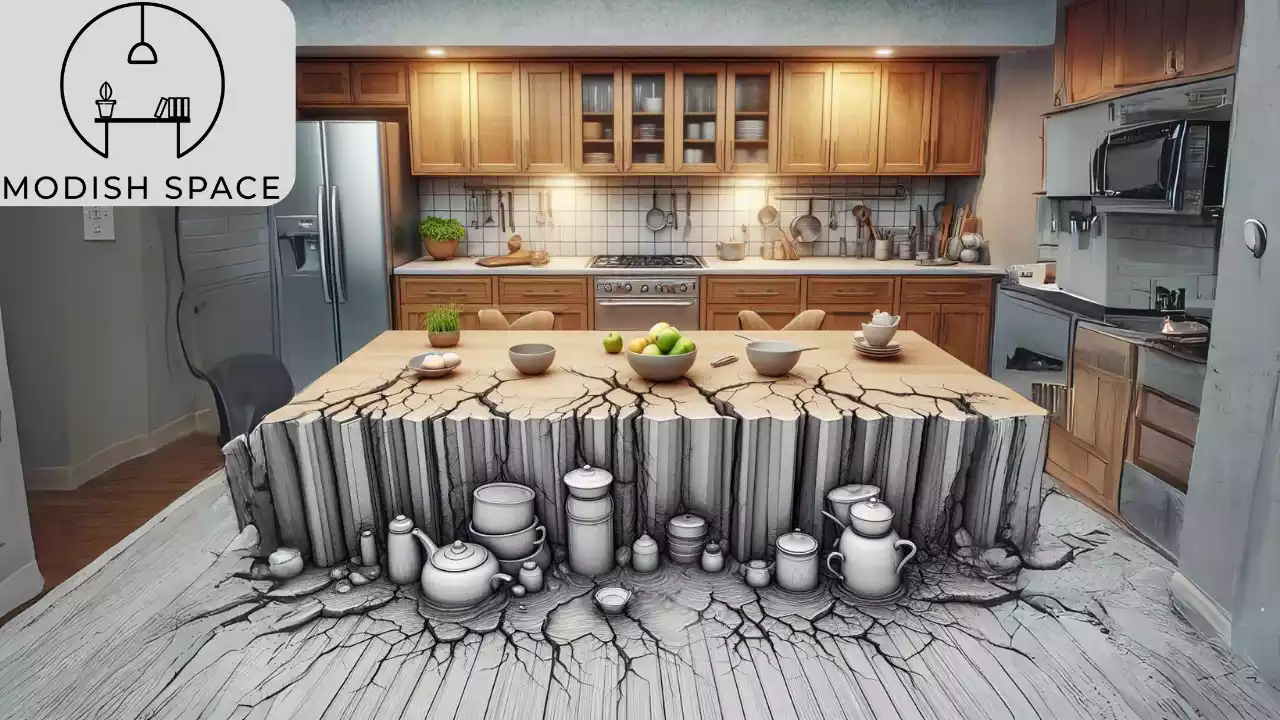It’s odd to think about something as simple as a kitchen countertops bending. Yet here I am, noticing a slight warp in my own culinary workspace. It’s got me wondering about the potential culprits behind this kitchen problem.
I’ve learned that several factors can cause countertops to bend, and I’m here to share my insights. Whether it’s due to improper installation, the daily strain of pots and pans, the occasional hot dish, or the inevitable encounter with water, these surfaces aren’t as invincible as they seem.
Understanding the reasons behind this bend can help me, and maybe you too, prevent or fix a sagging countertop before it becomes a kitchen catastrophe. Let’s dive into what might be warping our culinary platforms.
Continue Reading to Understand These Key Points:
- Improper installation factors, such as leveling errors and anchoring issues, can lead to uneven weight distribution and stress fractures.
- Placing excessive weight on a countertop can cause bending and compromise its structural integrity.
- Heat exposure can cause countertops to bend due to thermal expansion, so selecting materials that can withstand specific thermal conditions is important.
- Water penetration and moisture damage, especially in porous materials like natural stone or wood, can result in swelling and bending of countertops, so regular maintenance and proper sealing solutions are crucial.
Improper Installation Factors
One critical factor contributing to a bending kitchen countertop is an improper installation I’ve frequently observed. When examining the underlying causes, I’ve pinpointed leveling errors as a predominant factor. Ensuring a countertop is perfectly horizontal is paramount for both aesthetic and functional reasons.
Even the slightest deviation from the true level can result in uneven weight distribution, leading to stress fractures and, ultimately, bending.
To avoid such pitfalls, precise measurements and the use of professional-grade levels during installation are non-negotiable. In my analysis, I’ve found that ignoring even millimeter discrepancies can accumulate, culminating in a visibly warped surface over time.
Additionally, anchoring issues play a significant role in the integrity of countertop installations. Appropriate anchoring ensures that the countertop remains affixed to the cabinetry or substrate without any shifting.
I’ve seen instances where improper or insufficient anchoring has led to movement, which, when combined with the weight of the countertop material, can cause bending or cracking. Selecting the correct anchors, factoring in the weight and composition of the countertop, and securing them at the right tension are essential steps that can’t be overlooked.
Excessive Weight and Pressure
I’ve discovered that placing excessive weight on a countertop can lead to bending, particularly if the material isn’t designed to support such loads. It’s crucial to understand that kitchen countertops are engineered to withstand a certain amount of weight. When this limit is exceeded, the structural integrity of the countertop is compromised. This can manifest as bending or, in extreme cases, cracking.
To avoid this, I’ve learned that counterbalance solutions are essential. These are mechanisms or design features that help distribute the weight evenly across the surface. In situations where heavy kitchen appliances or stacks of dishes apply concentrated pressure, counterbalance solutions can prevent localized stress that leads to bending.
Moreover, support reinforcement is another key strategy. This involves strengthening the underlying cabinet structure or adding support brackets where necessary. By doing so, the countertop gains additional support, especially around areas of vulnerability such as sinks or long spans without cabinetry beneath.
In my analysis, it’s clear that recognizing the weight-bearing limitations of countertop material and incorporating counterbalance solutions and support reinforcement are critical steps in preventing bending. It’s not just about the aesthetics; it’s about preserving the functionality and longevity of the kitchen workspace.
Heat and Thermal Expansion
In addition to weight-related issues, heat exposure often causes kitchen countertops to bend due to thermal expansion. This phenomenon occurs when materials expand as they absorb heat and contract as they cool down.
Different materials have varying coefficients of thermal expansion, meaning they’ll expand and contract at different rates when exposed to the same temperature changes.
The crux of the problem with kitchen countertops lies in material compatibility. When a countertop comprises different materials bonded together, or when the substrate and countertop material expand at different rates, stress can build up. This stress may result in bending or even cracking if the materials aren’t adequately matched or designed to accommodate these movements.
Seasonal fluctuations also play a significant role. In climates with marked temperature variations, countertops can repeatedly expand and contract.
This cyclical change can weaken joints and lead to bending over time. It’s crucial to select materials that can withstand the specific thermal conditions of the environment they’re installed in to mitigate this risk.
Transitioning to another factor that significantly impacts the integrity of kitchen countertops, let’s explore how moisture and water damage can further contribute to the bending issue.
Moisture and Water Damage
My kitchen’s susceptibility to bending extends beyond thermal effects, as moisture and water damage also play a pivotal role in compromising its structural integrity.
When water penetrates a countertop, especially if it’s porous like natural stone or wood, it can cause the material to swell, soften, or even rot, resulting in a noticeable warp or bend. This risk is magnified if the countertop isn’t properly sealed or if the sealant has worn away over time.
Analyzing the factors that contribute to moisture-related damage, I’ve pinpointed several key areas of concern:
- Inadequate sealing solutions that fail to protect the material from water permeation.
- Poor drainage design around sinks and edges, allowing water to pool and seep into countertop materials.
- Repeated exposure to standing water can dramatically accelerate the degradation process.
To mitigate these risks, I’ve learned that it’s essential to apply high-quality sealing solutions to my countertop, ensuring that all surfaces are thoroughly protected. Additionally, I must consider the drainage design in my kitchen to prevent water from collecting on the countertop.
Regular maintenance, such as resealing surfaces and fixing leaks promptly, is critical to preserving the countertop’s longevity and preventing bending due to moisture damage.
Material Defects and Aging
Why then, beyond moisture concerns, does my countertop still show signs of bending? The answer often lies in material defects and the natural aging process. Quality control during the manufacturing and installation process is pivotal to ensure the structural integrity of countertops. Any lapse in this control can result in material defects that may not be apparent immediately but can lead to bending over time.
These defects could be due to substandard raw materials, improper curing or treatment of the countertop material, or errors during the cutting and finishing processes. Even the most stringent quality control measures can’t always predict the complex interactions between materials and the environments they’re placed in.
As the countertop ages, it’s exposed to a variety of stresses and strains, from thermal expansion and contraction to the weight of kitchen items and general wear and tear. Aging materials can lose their resilience, becoming more prone to warping.
For example, wood countertops may warp as the wood fibers expand and contract with changes in humidity and temperature. Similarly, plastic laminates might peel or warp due to prolonged exposure to heat and moisture.
In essence, a countertop’s resistance to bending diminishes as the material’s ability to withstand stress degrades over time.
Final Thoughts
In the dance of durability versus decay, my kitchen countertop performs precariously. Poor installation sets the stage for a wobbly waltz, while excessive burdens and the scorching touch of hot pans orchestrate a silent symphony of stress.
Moisture seeps in like an uninvited mist, eroding resolve, and the relentless march of time weave cracks into existence. It’s a tableau of material mortality, where every bend and warp is a technical testament to the relentless physics at play in my culinary arena.

